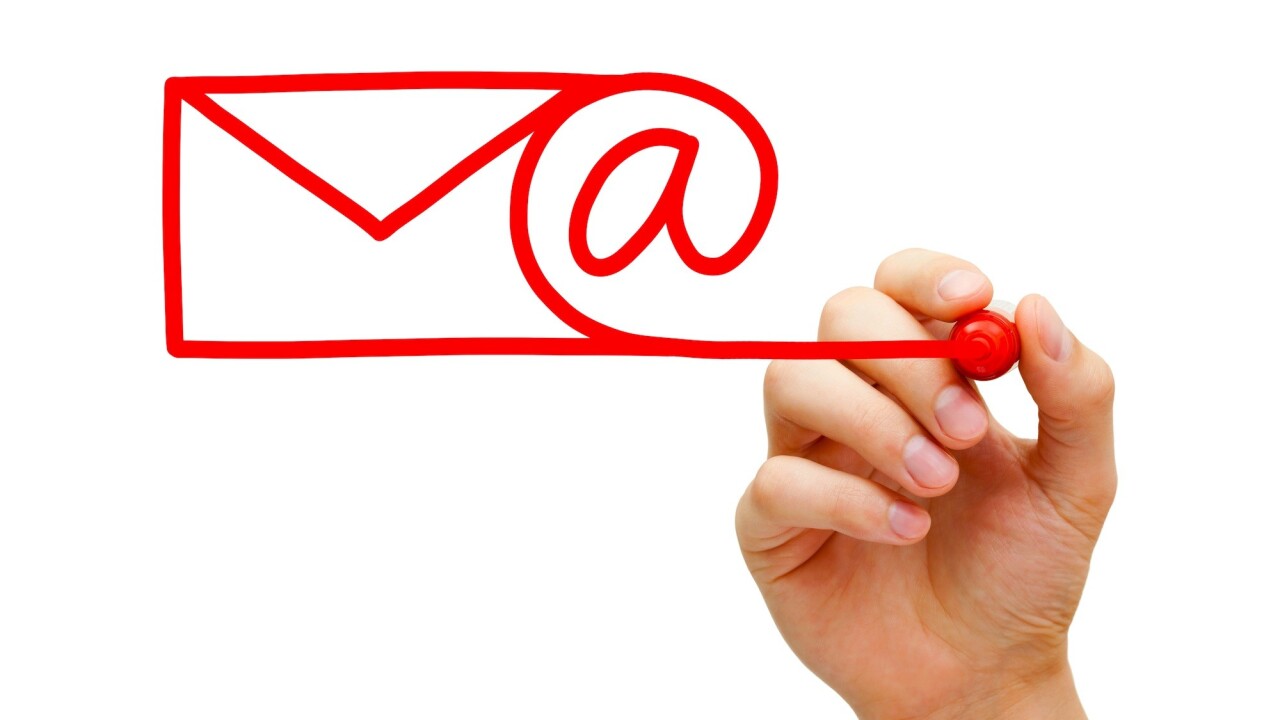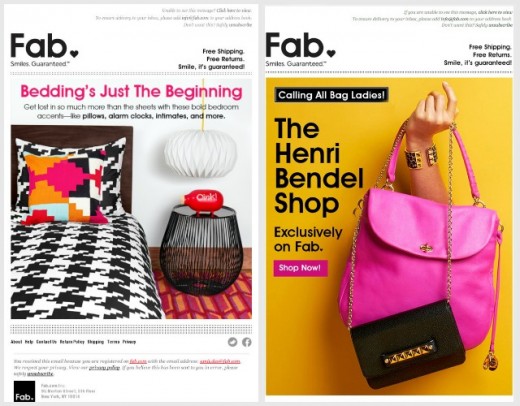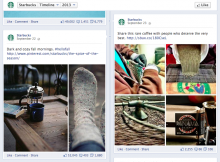
Whether you’re a freelancer, content outlet, or brand of product/service, email marketing can prove to be an effective means of reaching your audience of stakeholders, customers or media contacts. But these days, you’re also expected to manage a Facebook page, a Twitter account, an Instagram photo stream and a Tumblr blog.
With all these channels and formats for communicating with your brand’s followers, it can be difficult to figure out which medium is appropriate for when you have to share information.
While social media still enjoys some of its new-kid-on-the-block novelty, email still reigns as the preferred marketing method for 75 percent of users, according to research compiled by Web hosting service Host Papa. That’s not surprising, because email offers numerous advantages when it comes to delivering information directly to users — it reaches a captive audience who have oped in to hear from you, and prompts action from recipients.
Let’s look at some instances where email is most suitable for your brand communication, how to make the most of your outreach efforts, and when you should consider social media to share your message with your audience.
Email marketing: for your eyes only
“Emails are private: this is the key difference between email and social media,” says William Grobel, a manager in Deloitte’s Marketing & Insight practice.
Marketers should take advantage of the opportunity presented by email to share information that is relevant to recipients who are familiar with the brand, who already associate with it in some way, and who expect timely updates from their preferred products and services.
“Brands should be respectful of this and avoid being too impersonal, too frequent and too irrelevant,” adds Grobel.
An email is far more personal than a message blasted across social media because it hits users’ inboxes directly, which implies that it’s meant specifically for them as customers/stakeholders, and requires their attention and action. This is a chance to create a connection between the brand and its audience, and build value over time.
Analytics offered by numerous email marketing tools now allow you to track how many recipients opened your emails, see what they clicked on, and understand which aspects of your messaging users respond to, thus bringing you a wealth of information on what your users are interested in and helping you improve your messaging for greater impact.
When should you use email marketing?
When you want to share information with people who already know of your brand, email marketing is the way to go. That means you have a captive audience consisting of customers, stakeholders, and site visitors who have subscribed to updates from you.
This is important to remember while crafting your content — since you have the reader’s sole attention once they open your email, you can focus on delivering a compelling message, rather than competing against several voices for on-screen time, says Ben Matthews, Head of Comms at FutureGov.
Amit Das, UX/UI Designer at Fab.com, echoes this sentiment. “At a core level, Fab is about discovering products that you did not even know existed. It becomes important for us to make our users know about the best designed products available for them, and we do so through product- and offer-related email newsletters,” he says.
“They are a big traffic driver for us: Just in November thus far, emails have driven almost 1/3 of all of our site traffic; during November last year, emails drove 40 percent+ of all of our revenues.”

A new startup named Bootstrapp has an interesting challenge: introducing recommerce to India. Co-founder Saptarshi Nath says email is a great way to education customers on what they do.
“Email newsletters linked to our blog content provide us this opportunity more clearly than social media,” he says. “As for offers and deals, we’re generally able to reach only about 1 to 5 percent of our target audience via social media, and so we use email to reach customers who aren’t regulars on Facebook.”
Rich Leigh, co-founder of blogger outreach database Bloggabase, has a split audience and uses email to reach both effectively. “The reason an email newsletter format will work nicely for us, separately from our social media activity, is that we can target the recipient of our newsletter much more carefully.
“We have two main parties that use bloggabase – our opted-in bloggers, and the PRs/marketers/brands that subscribe to the database to contact them – and both parties will expect different information in our email correspondence with them. Bloggers can expect more regarding blog news and tips of how to build better blogs and marketers can expect content related to working with bloggers more successfully,” says Leigh.
Best practices for email marketing
William Grobel shares his five key rules for a good marketing email:
1. Establish a clear purpose of communication
It’s important to ensure that your email message accomplishes or helps users accomplish something, whether that’s sharing updates that will affect customers (such as new features, new products, partnerships or events), requesting feedback, promoting a sale or disseminating compelling information that isn’t available elsewhere online.
2. Tailor content to suit your audience
“We try to customize our outreach to different customer segments or their previous behaviors. For example, saying, ‘We see you purchased a new Nokia phone; how about these Skullcandy earphones to jazz up your tunes?’ works better than just ‘Get up to $10 off on Skullcandy earphones,'” says Nath.
Elaborating on the idea of personalised content, Das says, “One email we sent two months ago featured decorative plastic penguins that were pretty expensive. The product had one of our lowest CTRs and CTORs (Click Through Open Rates). A lot of our customers couldn’t immediately relate to such a high-design item; it would have been best sent to our customers that have bought pricey home accents before.”
3. Distribute regularly
Stick to a schedule so your audience can get accustomed to reading and acting on your content.
4. Make it visually engaging
Images and the use of color to call out key items go a long way in quickly communicating what’s important in your email to users. Be sure to optimize images and implement responsive design techniques to ensure that your mails display as quickly and correctly as possible.
5. Monitor the effectiveness of your emails
“Keep an eye on engagement metrics, such as open rate and click through rate,” says Leigh. “Week to week, you can see how design or content changes can affect subscriptions, forwards and opens -– it’s important our audience care about the email, otherwise it’s just another thing taking up space in their already-crowded inboxes.”
Nath also adds that you should take advantage of modern email analytics to understand “who open your mailers the most and who clicks on your links — send them targeted newsletters and encourage them to share your content. They may not buy anything themselves, but may encourage five others to buy.”
Aditya Kshirsagar, Community Manager at Effect Works and NFN Labs, reminds us to get the basics right:
- Always implement two-step subscription verification
- Make sure the unsubscription process is easy to find in the email and deal with
- Avoid stuffing your emails with hyperlinks to avoid getting junked into the spam folder.
When is social media the way to go?
When you want to connect with and engage your target market, social media platforms allow you to do so with ease, reaching a larger audience than your customer base while you’re at it. Social media is more about broadcasting and building brand awareness, whereas email is about making and strengthening more personal connections with your core audience.
“Lengthy articles are best reserved for blog posts as opposed to emails, and social media is perfect for sharing such content,” says Matthews. This is particularly true when said content is geared towards brand-building, and towards spreading the word about what the company does and stands for.
Rahul Sharma, President, Public Affairs and The Content and Design Bureau, Genesis Burson-Marsteller, adds that if you’re looking to generate buzz and have people respond, back up your email/blogging efforts with social media outreach to really get a pulse from your audience.
Says Nath, “If you want to cast a wider net than your captive audience to promote your offers/campaigns, then social media is the right platform — contests and Web-based offers are better run on Facebook and Twitter than on email, because your reach with the latter is limited to your mailing list.”
Social media also allows you to build, grow and actively engage a community in conversation. Sharing works in progress, domain-specific news and even fun content that allow users to interact directly with the brand, helps to reaffirm users’ loyalty to the brand and offers a chance to connect even without having to have a real transaction (like a purchase) or directly experience the brand.
 Starbucks’ Facebook page does a great job of this, sharing fans’ pictures, store and product updates and timely posts regularly and creating a connection with their audience.
Starbucks’ Facebook page does a great job of this, sharing fans’ pictures, store and product updates and timely posts regularly and creating a connection with their audience.
“Where there is a need to inform and share insights, the choice is newsletters. On the other hand, where the need is for engagement, and the best place to connect with the audience happens to be one of the social media networks, then the choice is to share content on those platforms to provoke a response,” Sharma concludes.
“There are also times when it isn’t an either/or situation: you can share information on an e-mailer and then use social media channels to amplify the reach as well as look for feedback/comments on what you’ve shared.”
Top image credit: Ivelin Radkov/Shutterstock
Get the TNW newsletter
Get the most important tech news in your inbox each week.
This post has been brought to you by GetResponse: Create stunning newsletters and landing pages in minutes.







